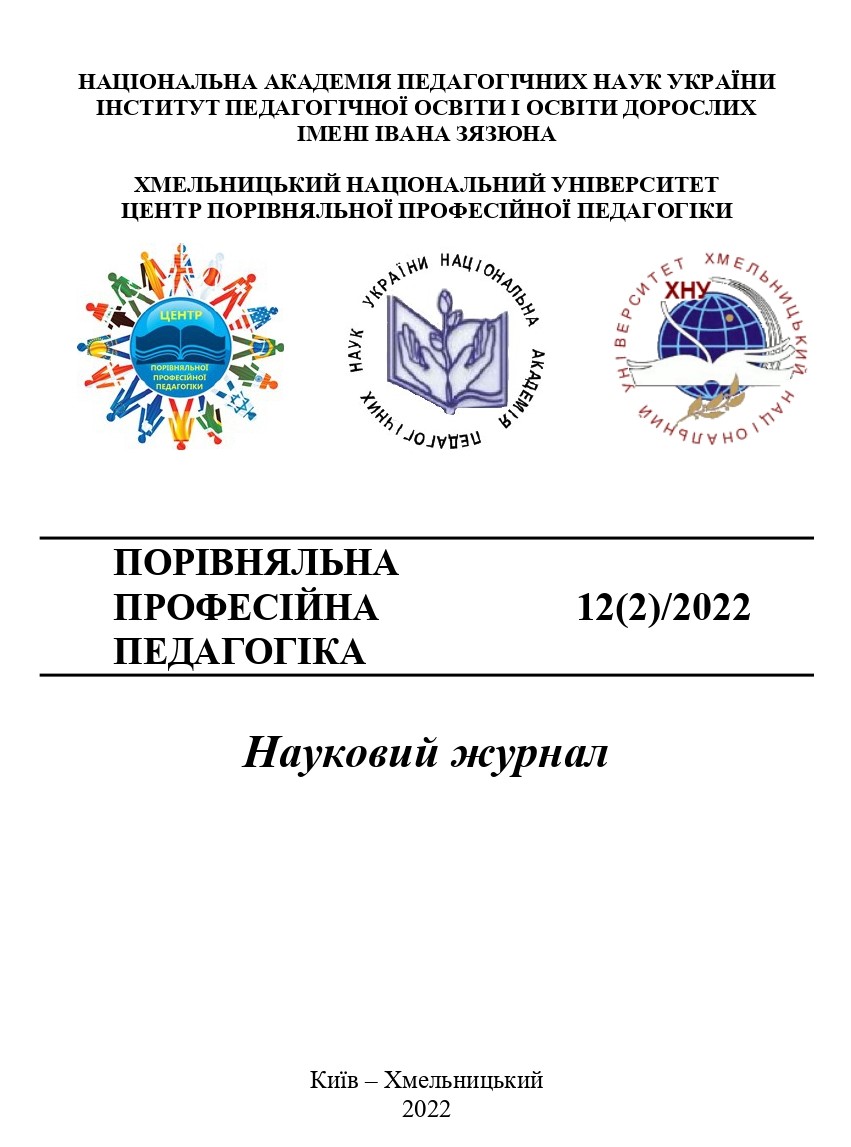CREATING A MOTIVATIONAL CONTEXT FOR FOREIGN LANGUAGE TRAINING OF STUDENTS AT HUMANITARIAN COLLEGES IN EASTERN EUROPE
DOI:
https://doi.org/10.31891/2308-4081/2022-12(2)-3Keywords:
humanitarian codes, duoethnographic dialogues, foreign language training, conceptual maps, motivational context, flipped classroom, Eastern EuropeAbstract
The article considers certain issues of increasing the effectiveness of teaching foreign languages to students of humanitarian institutions of higher education in Eastern Europe. It was shown that after the approval of the Common European Framework of Reference for Languages: Learning, Teaching, Assessment (CEFR) some radical changes took place in the methods of teaching foreign languages in many Eastern European countries. Taking into account the fact that among the most effective ways to improve the quality of foreign language education the CEFR determines an increase in the level of personal motivation of students to learn foreign languages, Eastern European educators more actively apply didactic solutions that meet as many criteria as possible, leading to deep learning of knowledge. Since motivation is an individual internal matter of the student, it is more logical for the teacher to create an educational context that the students themselves would recognize as motivating, rather than to directly motivate each student individually.
The authors note that the creation of a motivational context, in particular for students of liberal arts colleges, takes place through a constant demand to combine the acquired knowledge (internalization) with what students have previously learned, reflected on and are able to express independently (externalization); emphasis on higher-order thinking (analysis, synthesis, evaluation) and performance of tasks that are more focused on mental activity (minds-on) than on physical activity (hands-on), while remembering that activating exercises are often mistakenly identified with physical activity load on students; students’ analysis of their own experience, attitudes, and values. The authors consider in detail three didactic solutions that are widely used by Eastern European teachers in the process of creating a motivational context for foreign language training of future humanitarians: the creation of conceptual maps, the «flipped classroom» method, and the method of duo-ethnographic dialogues. The authors conclude that the given didactic solutions relate to the field of issues, the study of which is determined by the students themselves as having personal value and being useful for their future career. By performing these exercises, students express their own points of view, present their personal understanding of the essence of the phenomena mentioned in the framework of the lesson, sometimes even revise and change their previous beliefs. Therefore, students’ progress in learning a foreign language is not only a consequence of studying, but is due to the motivating educational environment created by their teachers.
References
Buzan, T. (2011). Myšlenkové mapy: probuďte svou kreativitu, zlepšete svou paměť, změňte svůj život [Mind maps: awaken your creativity, improve your memory, change your life]. Brno: Computer Press, 213 s. (in Czech).
Graves, K. (2016). Language curriculum design. The Routledge handbook of English language teaching. London: Routledge.
Gruba, P., Hinkelman, D., & Cardenas-Claros, M.S. (2016). New technologies, blended learning and the «flipped classroom». The Routledge Handbook of English Language Teaching. London: Routledge.
Kern, R. (2014). Technology as pharmakon: The promise and perils of the Internet for foreign language education. Modern Language Journal, 98(1), 340–357.
Komorowska, H. (2003). Dylematy nauczania języków obcych. [Dilemmas of teaching foreign languages]. Białystok: Uniwersytet w Białymstoku [Bialystok: University of Bialystok] (in Polish).
Kucner, A. (2019). Konceptualna mapa wizualności [A conceptual map of the visual]. Problemy lingwistyki i nauczania języków obcych [Problems of linguistics and teaching foreign languages], 19, 153–168 (in Polish).
Norris, J., Sawyer, R., & Lund, D. (2012). Duoethnography: Dialogic Methods for Social, Health, and Educational Research. Ondon: Left Coast Press.
Olszewska, J. (2018). Metoda «odwróconej klasy» – nowy sposób na lekcję [«Flipped classroom» method – the new way of lecturing]. Szkoła. Miesięcznik dyrektora [School. Principal’s Monthly], 1, 62–69 (in Polish).
Werbińska, D. (2018). Wykorzystanie duoetnografii jako innowacyjnego podejścia w rozwijaniu refleksji przyszłych nauczycieli języka obcego [The use of duoethnography as an innovative approach in devepoling the reflections of future foreign language teachers]. Neofilolog, 51(1), 59–74 (in Polish).
Werbińska, D. (2019). Skuteczne nauczanie języka obcego: trzy propozycje dydaktyczne [Effective foreign language teaching: three teaching suggestions]. Języki Obce w Szkole [Foreign Languages in School], 5, 53–58 (in Polish).
Wrona, A. (2017). «Odwrócona klasa» – dlaczego i jak odwracać? [«Flipped classroom» – why and how to flip] Informatyka w edukacji. Wokół nowej podstawy [Informatics in education. Around the new base], 2, 374–387 (in Polish).


